Discover the warmth and richness of teak wood.
Once teak, always teak.
History of Teak Plantations.
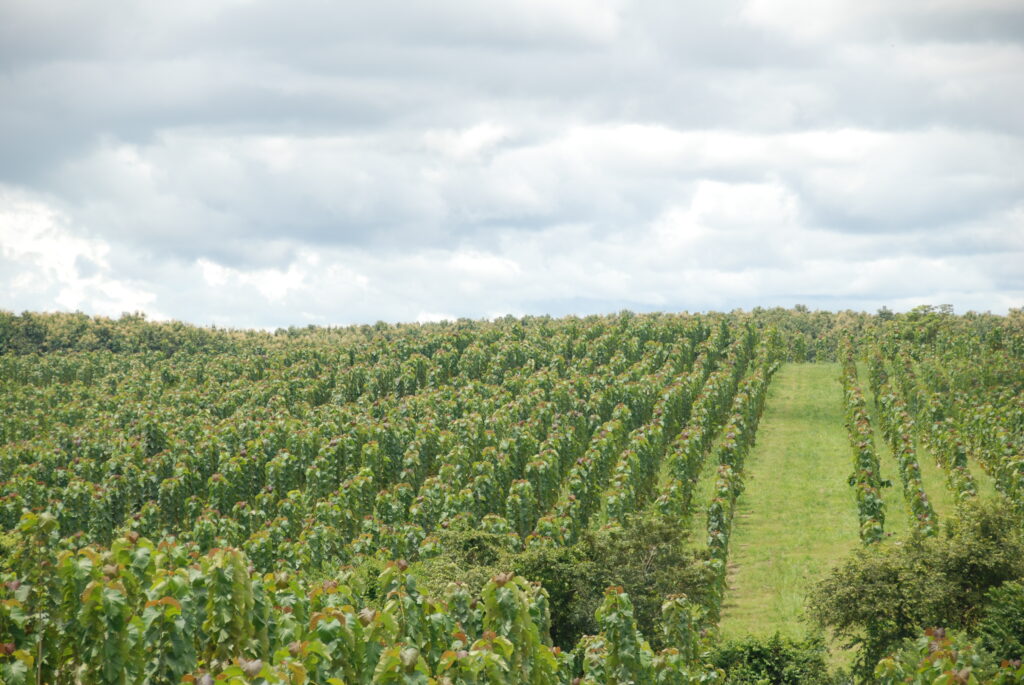
During the 1950s, teak became an important crop species in Central and South America. The first plantations were established in Panama, and teak quickly spread to other countries such as Honduras, Nicaragua, Colombia, and Ecuador.
Teak is a tree from the verbena family, originally from tropical Asia. It is believed to have been cultivated for more than 2000 years in India and Thailand for its valuable properties. Teak wood has traditionally been used for shipbuilding and furniture construction due to its high water resistance and durability.
In the 18th century, the British began importing teak for use in shipbuilding and as wood for fine furniture. As demand increased, teak was cultivated in other Southeast Asian countries such as Indonesia and Thailand.
Today, teak is still highly valued for its strength and durability, and it is widely used in shipbuilding, furniture manufacturing, and construction of homes and buildings. Although teak is a renewable resource, its cultivation can have a positive environmental impact when done sustainably. Therefore, it is important to seek certified teak wood from organizations that promote responsible forestry practices.
Teak
What is Teak?
Teak is an evergreen tree that belongs to the verbena family and is native to tropical Asia, although it is now cultivated in many parts of the world. Its scientific name is Tectona grandis.
Teak wood is highly prized for its high resistance to moisture and natural durability, making it ideal for use in shipbuilding, outdoor furniture manufacturing, and construction of houses and buildings.
Teak Wood is also resistant to termites and other insects, making it very popular in the construction industry.
In addition to its use in construction and furniture, teak is also used in the production of teak essential oil, which is used in perfumes and cosmetics.
Teak is a renewable resource, but its cultivation can have a negative environmental impact if it is not done sustainably.
Therefore, it is important to seek teak wood certified by organizations that promote responsible forestry practices.
Properties and characteristics
Durability
Teak wood is highly resistant to moisture, insects, and decay, making it perfect for use in humid and outdoor environments.
Dimensional stability
Teak has low contraction and expansion due to changes in humidity and temperature, making it ideal for use in outdoor environments.
High density
Teak has high density and exceptional resistance to deformation, making it ideal for use in structural applications such as building boats and bridges.
Natural beauty
Teak has a golden color and a beautiful texture that ages elegantly over time.
Corrosion resistance
Teak is corrosion-resistant and is commonly used in boat building and other marine structures.
Resistencia a la descomposición:
La madera de teca contiene aceites naturales que la protegen de la descomposición, lo que la hace adecuada para aplicaciones en entornos húmedos.
Bending resistance
Teak has high bending resistance, making it ideal for use in furniture making and other objects.
Fire resistance
Teak has high fire resistance and is considered low-risk wood in terms of fire spreading.
Sustainability
When is plant in a sustainable manner, teak can be a renewable and responsible source of wood, things that convert in an attractive option for consumers who are searching for environmental respectful products.
Planting
and cultivation of teak
Teak is a tree species primarily cultivated for its high-quality and durable wood.
Here are some important aspects of teak planting and cultivation:
Choosing a site
Teak (Tectona grandis) is an evergreen tree native to South and Southeast Asia, including countries such as India, Indonesia, Thailand, and Malaysia. Teak has been used by Asian cultures for centuries. Teak wood was used by ancient Thais to build temples and palaces, and by Hindus for building boats and furniture.
Teak requires a warm and humid climate, and a well-drained and fertile soil. It is recommended to choose a site that have an average annual precipitation of at least 1.500 mm and an average annual temperature of at least 25°c in Panama we have this climate conditions generating high quality teak.
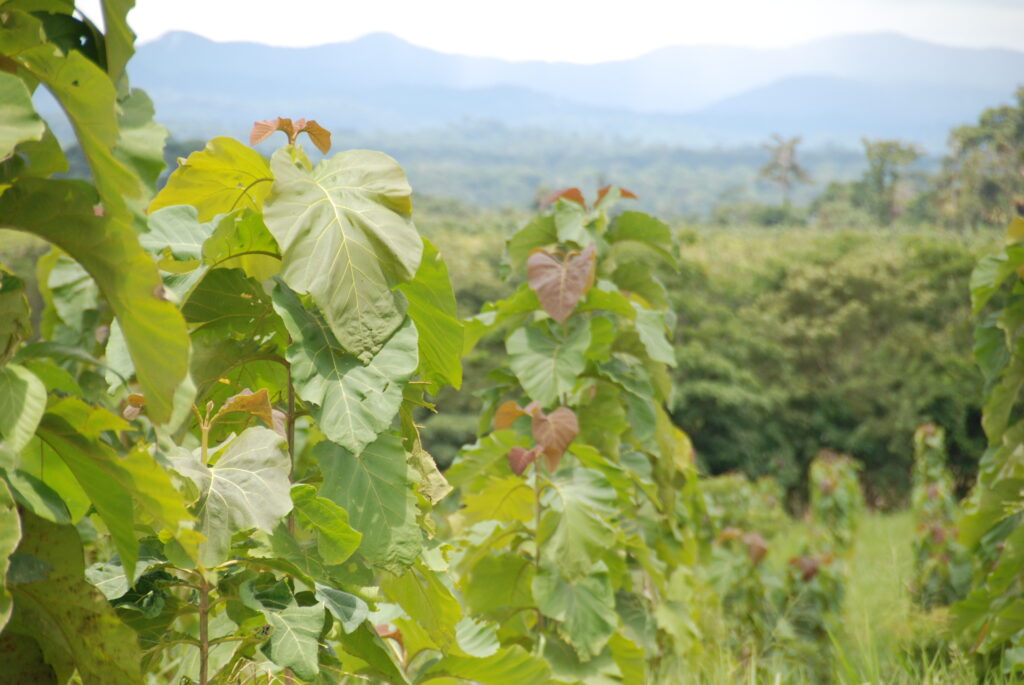
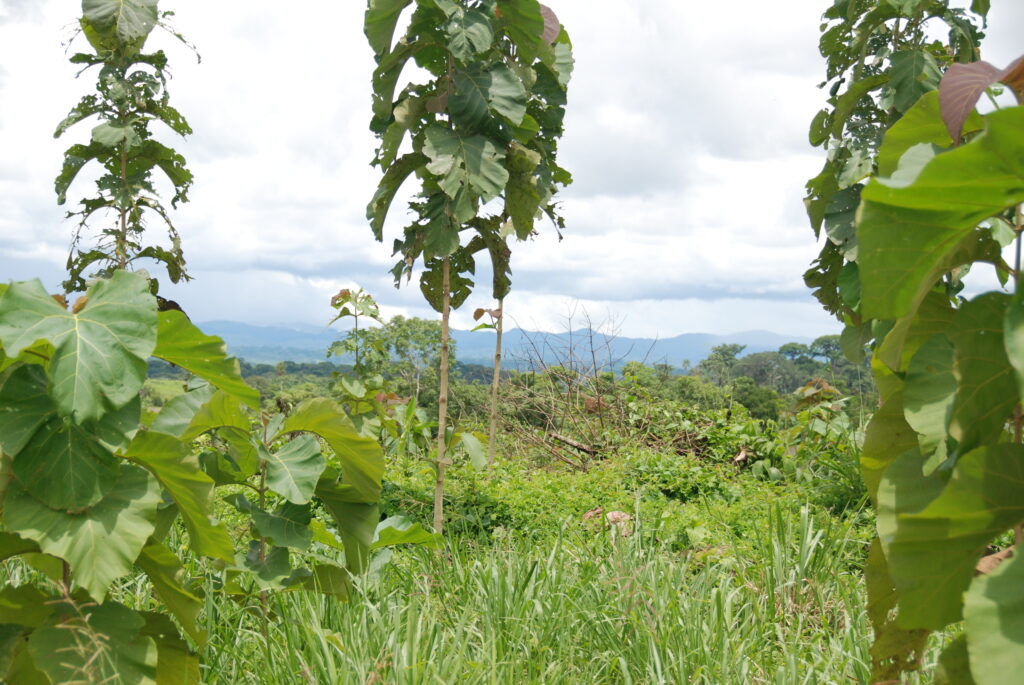
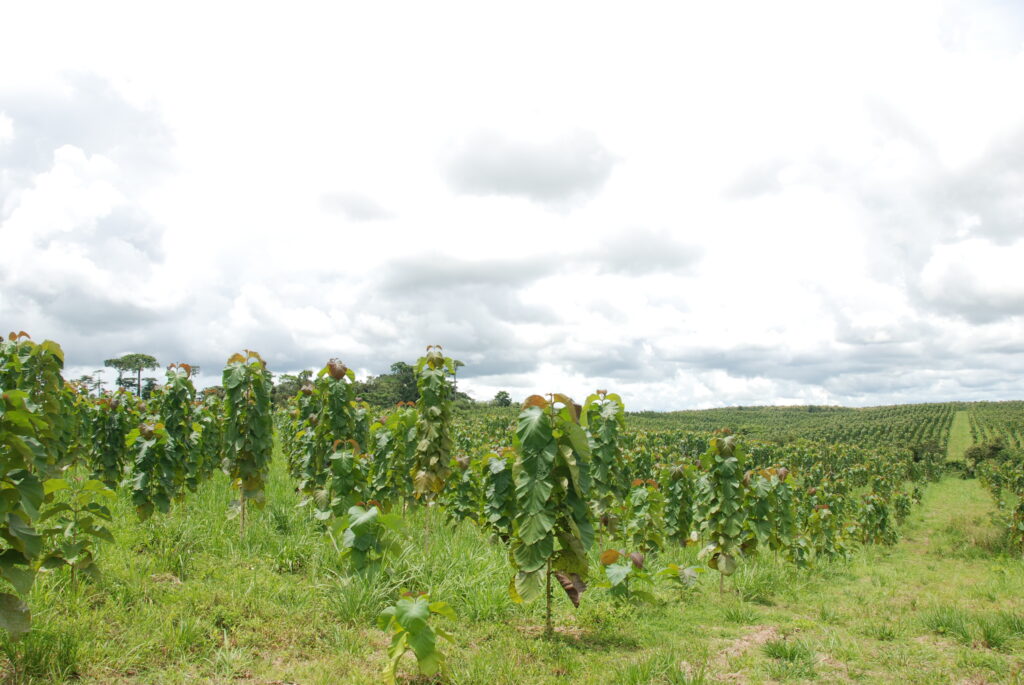
Teak clones
They are plant that had been let grow from vegetal material of a specific teak tree, cuttings and branches, instead of seed. These clones have the same genetic information as the original tree and, because of that, it is expected that they have similar characteristics, like wood quality, growing and disease resistance.
Teak clones have been used in the forestry industry to produce high-quality wood and ensure greater uniformity in planted forests. Furthermore, teak clones can be cultivated in nurseries and then transplanted to forested areas, which can accelerate growth and wood production.
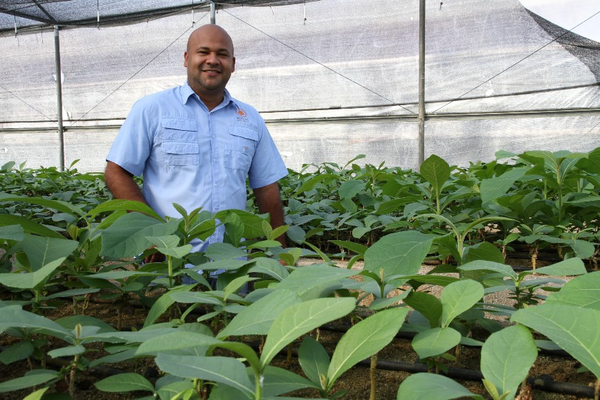
Harvesting
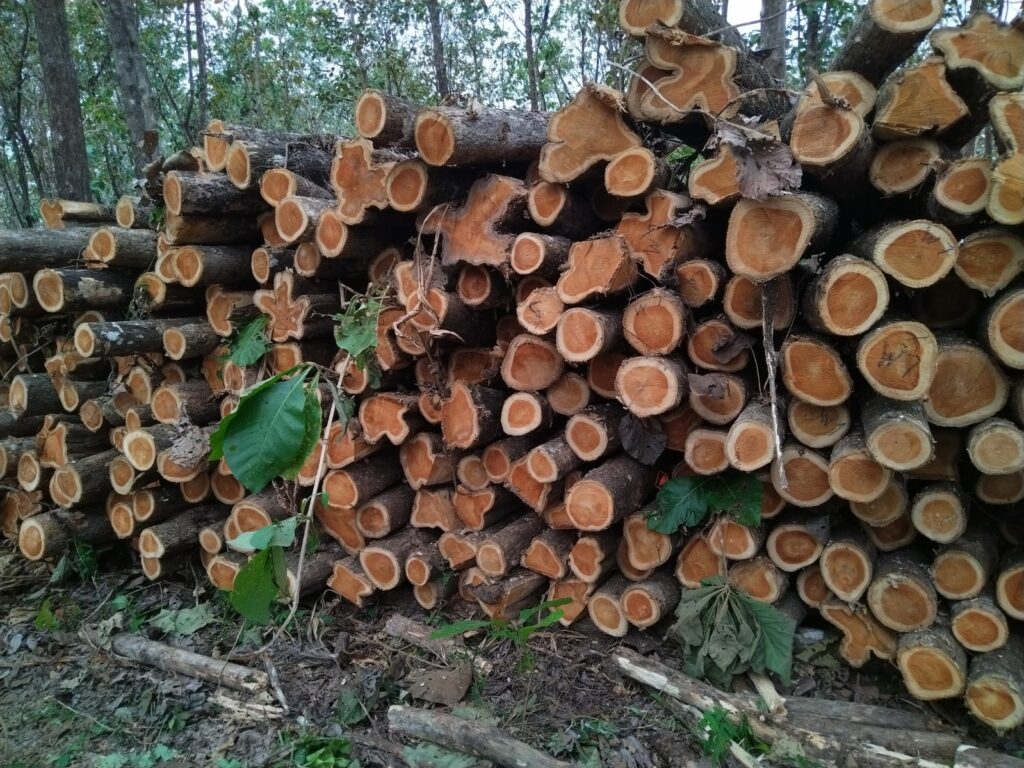
Teak can be harvested after 25 to 30 years of its plantation, depending on the plantation's purpose and market conditions.
Harvesting must be done carefully to avoid damaging the remaining trees and maintain the sustainability of the plantation.
The planting and cultivation of teak require careful site selection, well-planned planting, and constant care and management.
If done properly, certified teak plantations are profitable, sustainable investments and drivers for rural economies.
Sustainability
of teak
The sustainability of teak is a very important issue due to the increasing demand for teak wood worldwide. Below are some key aspects related to the sustainability of teak.
One way to ensure the sustainability of teak is through forest certification, which verifies that the management of teak forests is carried out responsibly and sustainably. The most well-known certification seals include the Forest Stewardship Council (FSC).
Teak plantations are a way to produce teak wood sustainably, as they reduce the need to cut down natural forests. However, plantations can also have negative impacts on the environment and society, such as soil degradation and biodiversity reduction.
Responsible management of teak involves the implementation of cultivation and harvesting practices that minimize the environmental and social impact of teak production. This may include the use of organic cultivation methods, the protection of conservation areas, and the promotion of fair and safe practices for workers.
Natural teak forests are vital for biodiversity and the well-being of local communities. Protecting these forests from illegal logging and deforestation is essential to ensure the long-term sustainability of teak.
Research and innovation can improve the sustainability of teak, either through the development of more efficient and environmentally friendly cultivation practices or by identifying new tree species that can be used as alternatives to teak.
